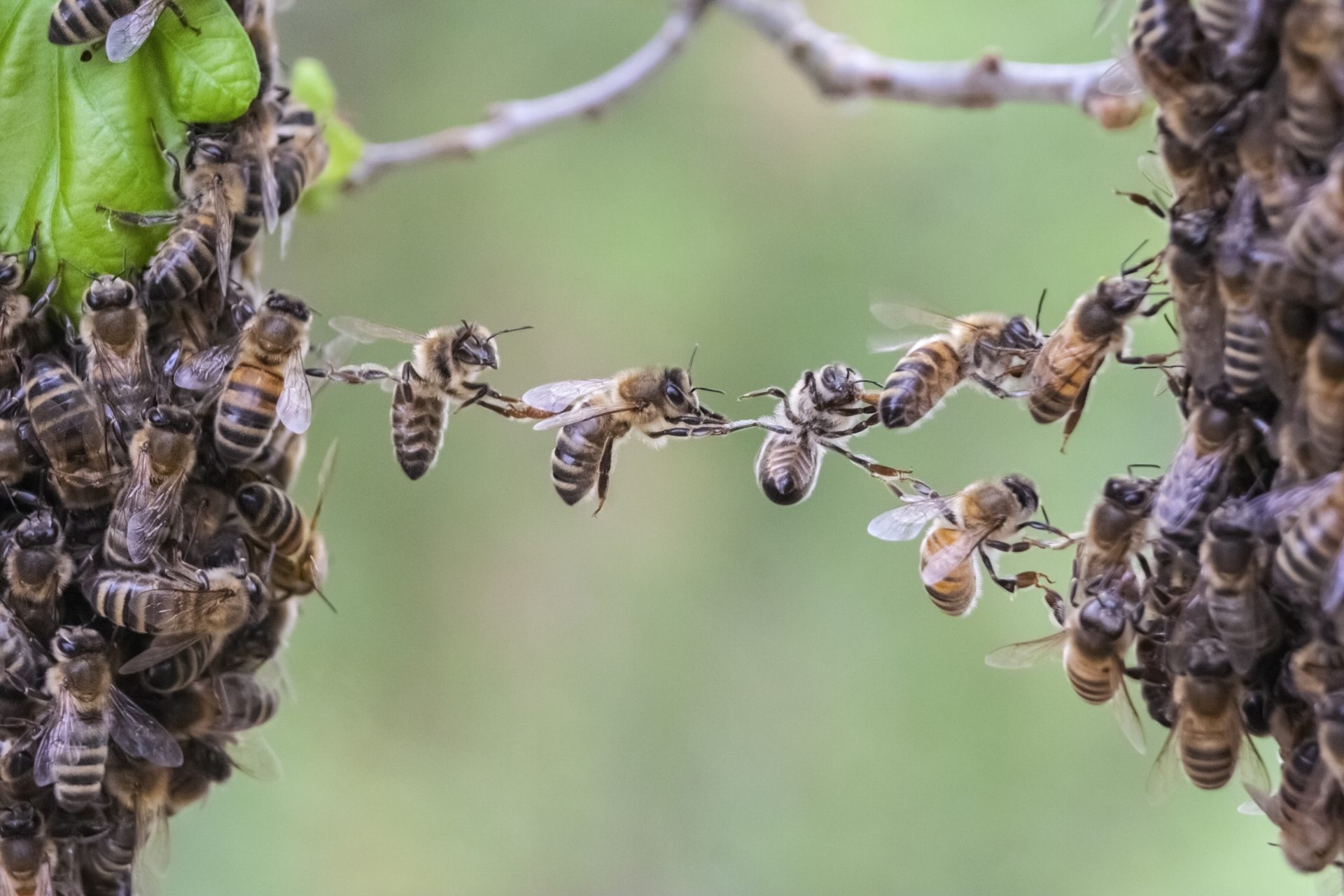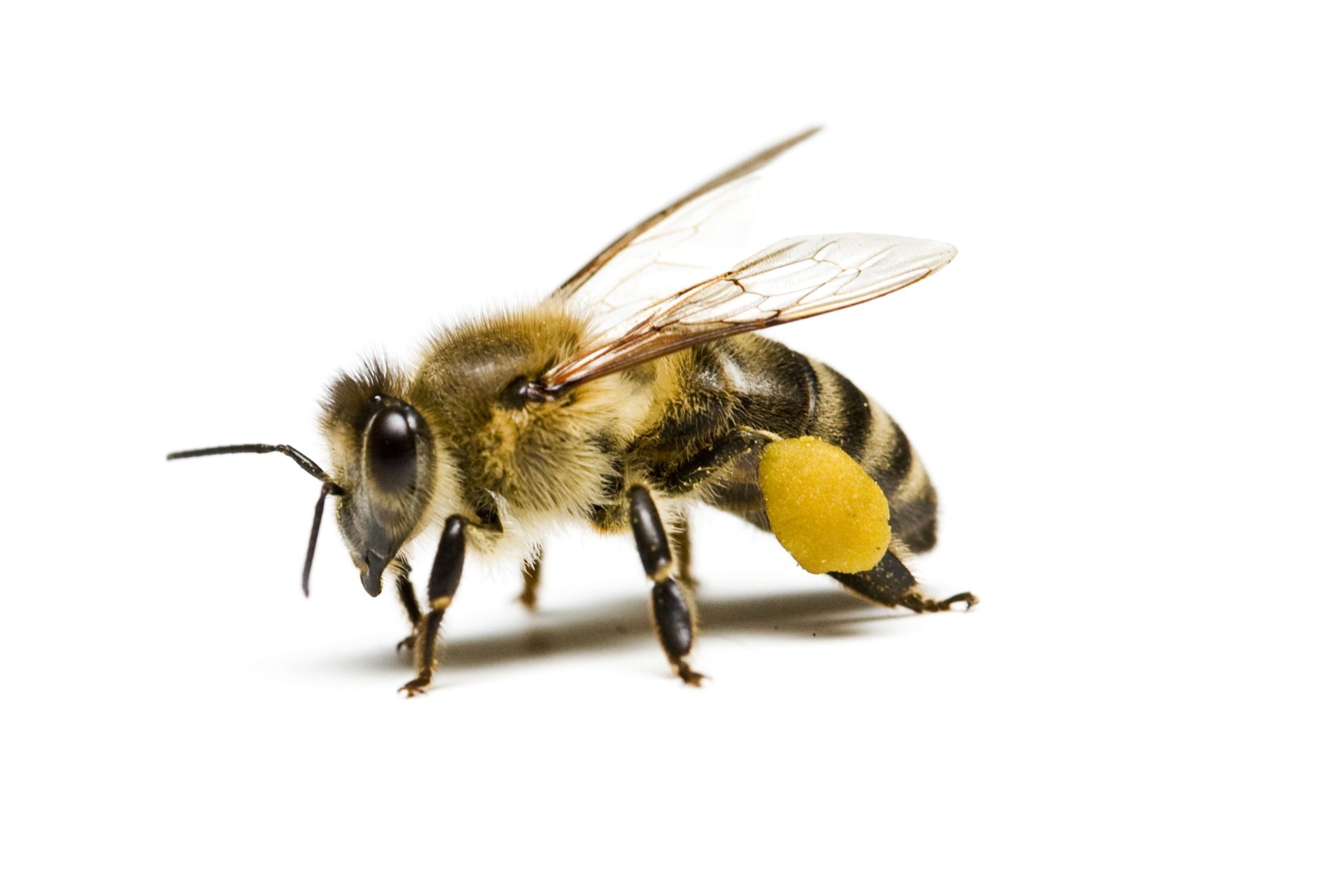Problem with Honey Bees?
Speak to our team for specialist advise on bees.

and qualified
Protect your property
Any discussion around pest control and bees is often contentious and emotive. Increasingly within our industry, lethal control of bees is seen as a last resort.
The reason that is often given is that “bees are protected”, which is not in fact true. In the case of Honeybees, they are far from endangered given the huge increase in bee keeping in recent years. However they are still important pollinator that play a big part of ecosystem.
The use of chemical treatments with bee species is very difficult to justify in most cases. Bees should not be treated in the same way you would a wasp and hornet nest.
Bumble Bees, Honey Bees, Solitary Bees, Wasps and Hornets can easily be misidentified. It is therefore important to confirm what species is causing the problem. From here we can then recommend any appropriate action that would need the taken.
Speak to The Pest Company on how we can help solve your Bee problem.
To contact us, please complate the attached form. Or call;
For North Yorkshire including York and Harrogate, call Jack on 07375 554760
For West Yorkshire including Leeds, Bradford & Huddersfield, call Neil on 0113 318 2143
For Cambridgeshire, call Sean on 01954 581032 including parts of Bedfordshire & Northamptonshire

Bee Smart!
People often mistake Honeybees, Solitary Bees, Bumblebees, Wasps and Hornet. Identifying the species is the first step to address the problem.
Are Honey Bees Protected?
In short, no. Honeybees are neither endangered or protected. However as a pollinator it is important we preserve all be bee species where possible as they play an important role in our ecosystem.
Due to the huge increase in popularity of bee keeping, Honeybee populations have grown globally. This has instances where honeybees chose to nest in problem locations around peoples home and businesses. When honeybee nests are in areas likely to cause a danger to people, or damage to property, removal of the nest may be required.
While not legally protected, companies spraying bees nests with insecticide in the same manner they they would wasps and hornets can lead to heavy fines for both the person completing the work, and the home owner.
Do the bees need removal?
Having bees in your property doesn’t automatically require removal. Many people have bees living in a wall cavity or disused chimney with many years without issue.
However, the longer the bees are in situ the larger the nest is likely to be. And so the larger the job would be should the be bees ever require removal.
It is therefore a decision for the property owner whether to opt for the bees to be removed or not.
If bees are entering into living areas, or occupying a space that cannot be safely avoided, leaving the bees may not be an option.
What if you see a honeybee swarm?
Honeybees reproduction starts be creating new queens. This new queen will leave the nest taking part of the worker bees with her. This “swarm” will then look for a new location to build a nest.
A swarm can often rest on the side of a wall, in a tree or bush. Larger numbers of bees can be flying around the area which can be frightening to people nearby.
Often bee swarms are not dangerous if left alone. It is important to keep pets, children and those allergic to stings away from the immediate area.
If the swarm is not entering your property, they will likely move on themselves naturally in a few days. However this carries a risk that they might move somewhere less desirable, such as into your chimney or wall cavity making them much harder to access and remove.
To have a honey bee swarm removed and it is fairly accessible, contact your local bee keeping association. They may be able to have a local bee keeper collect the swarm.
What if you have honeybees in your property?
If you notice bees entering your property, the first step is to have them properly identified. There are various species of wasp, hornet and other bees that are easily mistaken with each other. Speak to us for an initial survey for identification.
Once confirmed as honeybees, and the decision has been taken to remove them, we would then refer our clients for an inspection from a specialist bee removal contractor. From here a plan would be drawn up for their removal, including a quote for the work.
Honeybees are typically removed via a “cut out”, which involves the physical removal of the colony from the building. This often involves some element of building work to gain access to the colony, as well as necessary remedial work to make good the property after this has been completed. This is specialist work, requiring skills in both managing the bees, building work, and often working at height.
Poisoning a honey bee colony
With Honeybee “cut outs” often being extensive work, we are often asked why we cannot just treat the nest with an insecticide. There are various reasons why this is a bad idea.
Often when a nest of bees is treated with chemicals it is not fully effective. We have seen instances where honeybees have stopped using parts of the nest that has been poisoned, moving to a different area of the property causing further problems.
Using insecticide on a bees nest would contaminate the nest contents, which is likely to be stolen by “robber bees” from neighbouring hives. If left unprotected this would contaminate other nest in the area, including honey that may be used for human consumption. This in the past has lead to prosecutions for misuse of pesticides. A contaminated nest would therefore need to be sealed off, which is not always possible, or completely removed. If you are going to undertake the work of removing the dead nest, you may as well do it while it is alive!
The remains of dead nests often lead to secondary problems. Infestations of wax moths, other insects and rodents can often occur, and dripping honey and wax down walls causing further damage.
Never seal in a live honey bee colony entrance, unless you want a house full of bees.
For these reasons the chemical treatment of honey bees should only be considered as a last resort.
